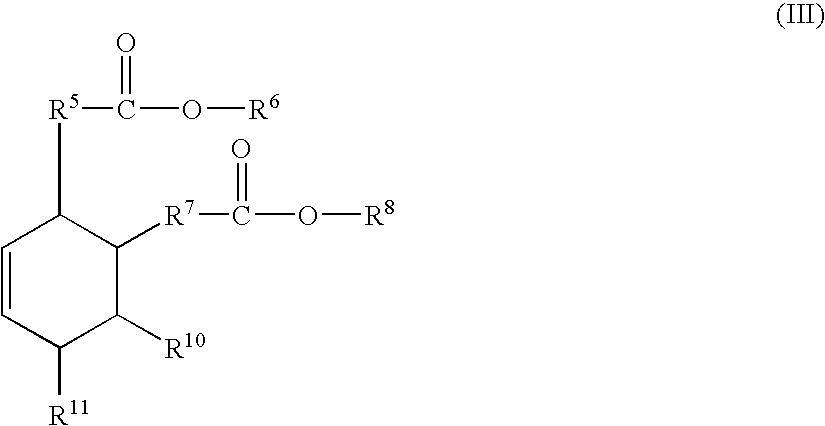Liquid adhesion promoter for cord-reinforced rubber and metal or polymer substrate/rubber composites
a technology of promoter and rubber, which is applied in the direction of layered products, chemistry apparatus and processes, and bandages, etc., can solve the problems of failure of adhesion between rubber components and between, internal rubber destruction in the under-belt pad, and tire breakdown, etc., to achieve superior adhesion and small loss of adhesion
- Summary
- Abstract
- Description
- Claims
- Application Information
AI Technical Summary
Benefits of technology
Problems solved by technology
Method used
Image
Examples
Embodiment Construction
The adhesion promoter systems of the invention include at least one long chain ester compound and at least one adhesive resin. The adhesion promoter systems are useful for improving the adhesion of rubber to metal and polymeric substrates, particularly metal and polymeric cord. Surprisingly, the adhesion promoter systems disclosed herein significantly increase the adhesion of rubber compositions to such metal and polymeric substrates. In the description, the terms “adhesion promoter system” and “adhesion promoter” may be used interchangeably.
In the adhesion promoter systems of the invention, long chain esters are typically added to natural or synthetic rubber with a vulcanizing agent and an adhesive resin. The adhesion promoter systems may be added to a natural and / or synthetic rubber(s), as a neat liquid, in order to promote adhesion. Typically, however, the adhesion promoters are mixed with a dry carrier, such as calcium silicate, to form an alternative delivery system, which can ...
PUM
| Property | Measurement | Unit |
|---|---|---|
| weight | aaaaa | aaaaa |
| adhesive | aaaaa | aaaaa |
| fatty acid | aaaaa | aaaaa |
Abstract
Description
Claims
Application Information
 Login to View More
Login to View More - R&D
- Intellectual Property
- Life Sciences
- Materials
- Tech Scout
- Unparalleled Data Quality
- Higher Quality Content
- 60% Fewer Hallucinations
Browse by: Latest US Patents, China's latest patents, Technical Efficacy Thesaurus, Application Domain, Technology Topic, Popular Technical Reports.
© 2025 PatSnap. All rights reserved.Legal|Privacy policy|Modern Slavery Act Transparency Statement|Sitemap|About US| Contact US: help@patsnap.com



